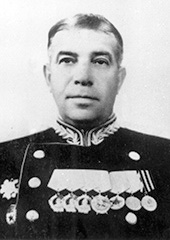| 2nd Rifle Corps | |
|---|---|
| Active |
|
| Country | Soviet Union |
| Branch | Red Army |
| Type | Infantry |
| Engagements |
|
| Commanders | |
| Notable commanders |
|
The 2nd Rifle Corps was an infantry corps of the Red Army during the interwar period and World War II, formed twice.

The Workers' and Peasants' Red Army, frequently shortened to Red Army, was the army and the air force of the Russian Soviet Federative Socialist Republic and, after 1922, the Union of Soviet Socialist Republics. The army was established immediately after the 1917 October Revolution. The Bolsheviks raised an army to oppose the military confederations of their adversaries during the Russian Civil War. Beginning in February 1946, the Red Army, along with the Soviet Navy, embodied the main component of the Soviet Armed Forces; taking the official name of "Soviet Army", until its dissolution in December 1991. The former official name Red Army continued to be used as a nickname by both sides throughout the Cold War.

In the context of the history of the 20th century, the interwar period was the period between the end of the First World War in November 1918 and the beginning of the Second World War in September 1939. This period is also colloquially referred to as Between the Wars.

World War II, also known as the Second World War, was a global war that lasted from 1939 to 1945. The vast majority of the world's countries—including all the great powers—eventually formed two opposing military alliances: the Allies and the Axis. A state of total war emerged, directly involving more than 100 million people from more than 30 countries. The major participants threw their entire economic, industrial, and scientific capabilities behind the war effort, blurring the distinction between civilian and military resources. World War II was the deadliest conflict in human history, marked by 70 to 85 million fatalities, most of whom were civilians in the Soviet Union and China. It included massacres, the genocide of the Holocaust, strategic bombing, premeditated death from starvation and disease, and the only use of nuclear weapons in war.








